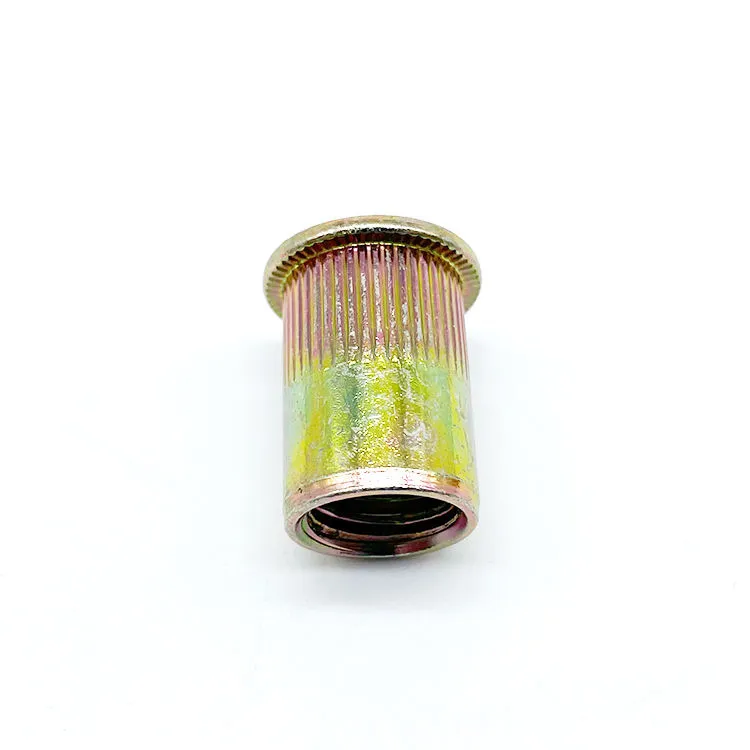

Zinc-Coated Washers for Enhanced Durability and Corrosion Resistance in Various Applications
Aug . 17, 2024 13:41 Back to list
Zinc-Coated Washers for Enhanced Durability and Corrosion Resistance in Various Applications
Understanding Zinc Washers A Comprehensive Overview
Zinc washers are a vital component in various mechanical applications, known for their ability to distribute load, reduce friction, and provide a protective layer to prevent galvanic corrosion. Their unique properties make them a preferred choice in numerous industries, including construction, automotive, and manufacturing. In this article, we will explore the characteristics, benefits, and applications of zinc washers, as well as their role in enhancing the longevity of assembled parts.
What is a Zinc Washer?
A washer is a thin plate, typically disk-shaped, with a hole in the center that is used to distribute the load of a threaded bolt or nut. Zinc washers are specifically made from zinc-coated steel or pure zinc, which enhances their resistance to rust and deterioration. The zinc coating acts as a sacrificial layer that protects the underlying metal from environmental factors such as moisture, humidity, and corrosive elements.
The Importance of Corrosion Resistance
One of the primary advantages of using zinc washers is their excellent corrosion resistance. Zinc serves as a protective barrier against oxidization, ensuring that the metal parts remain intact over time. This property is particularly essential in outdoor applications where exposure to harsh weather conditions is inevitable. By employing zinc washers, manufacturers can significantly extend the lifespan of their products, reducing maintenance costs and enhancing overall reliability.
Load Distribution and Friction Reduction
Zinc washers play a crucial role in load distribution. When a bolt is tightened, the washer helps to spread the load over a larger surface area, preventing localized stress that could lead to material failure. This distribution is vital in applications where mechanical components are subject to dynamic loads. Additionally, the smooth surface of zinc washers aids in reducing friction between moving parts, which can enhance the efficiency of machinery and equipment.
zinc washers

Thin vs. Thick Washers
Zinc washers come in various thicknesses to suit different applications. Thin washers are often used in applications where space is limited, while thicker washers provide greater load distribution and support. The choice between thin and thick washers depends on the specific requirements of the assembly, including load capacity, friction concerns, and environmental conditions.
Applications of Zinc Washers
Zinc washers are widely used across various industries due to their versatility. In the construction sector, they are commonly utilized in bolted connections for structural steel, piping, and HVAC systems. In the automotive industry, zinc washers can be found in assembly points for suspensions, engines, and chassis components. They are also prevalent in electronic devices, where they help secure components while providing insulation against vibrations and shocks.
Environmental Considerations
As awareness of environmental issues increases, the demand for sustainable materials is rising. Zinc is an abundant element, and its extraction and processing produce less environmental impact compared to other metals like nickel or chromium. Moreover, zinc is recyclable, making zinc washers an eco-friendly choice in various applications. The use of zinc not only helps improve product performance but also aligns with sustainable manufacturing practices.
Conclusion
In conclusion, zinc washers are a fundamental component in countless applications, providing robust features that contribute to durability and performance. Their corrosion-resistant properties, ability to distribute loads, and friction-reducing characteristics make them indispensable in various industries. As technology advances and the demand for sustainable practices increases, zinc washers will likely continue to play a pivotal role in enhancing both product longevity and environmental responsibility. Understanding the benefits and applications of zinc washers can help manufacturers make informed decisions that will lead to improved outcomes in their projects and products.
Latest news
-
Premium Fasteners Manufacturer | AI-Driven Solutions
NewsAug.01,2025
-
Hot Dip Galvanized Bolts - Hebei Longze | High Strength, Corrosion Resistance
NewsAug.01,2025
-
High-Strength Hot Dip Galvanized Bolts - LongZe | Corrosion Resistance, Custom Sizes
NewsAug.01,2025
-
Best Self Tapping Screws for Drywall - Fast & Secure Installation
NewsJul.31,2025
-
High-Strength Hot Dip Galvanized Bolts-Hebei Longze|Corrosion Resistance&Customization
NewsJul.31,2025
-
Hot Dip Galvanized Bolts-Hebei Longze Metal Products|Corrosion Resistance&High Strength
NewsJul.31,2025

